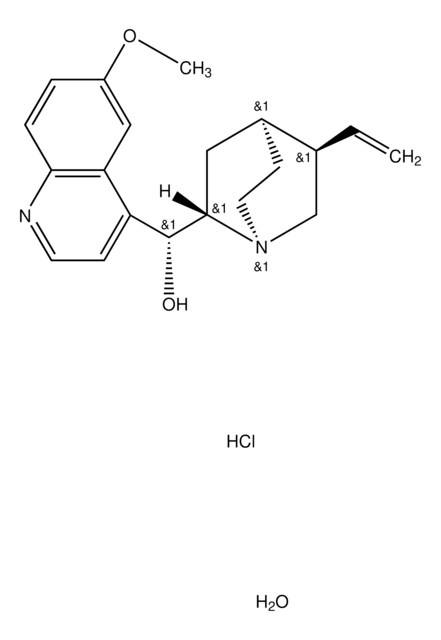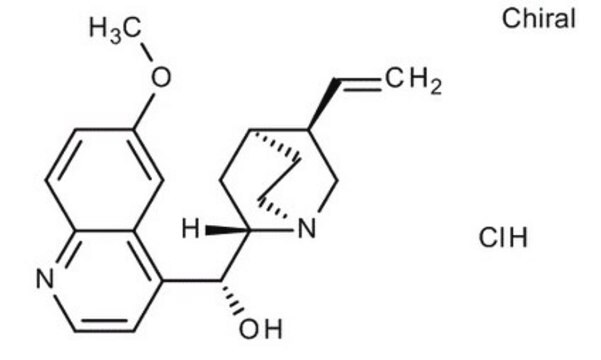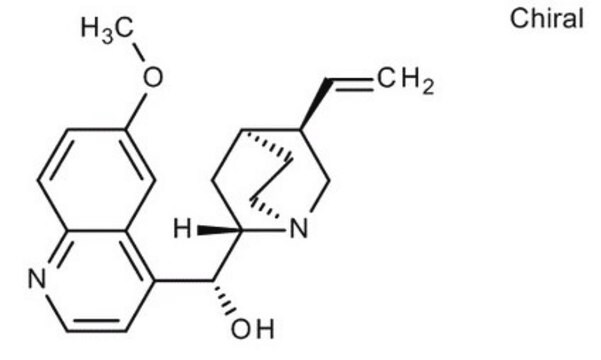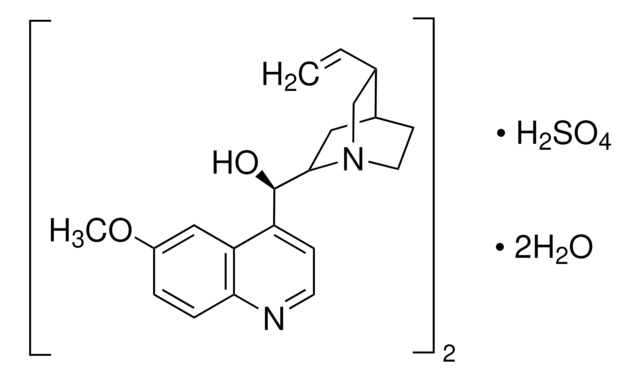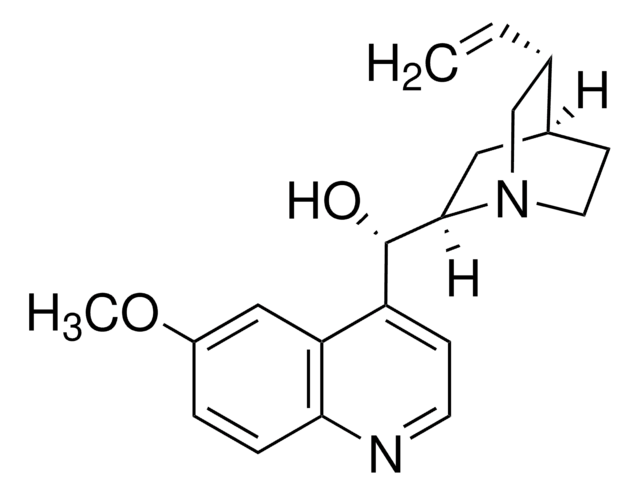22630
Quinine hydrochloride dihydrate
BioReagent, suitable for fluorescence, ≥98.0% (NT)
Synonym(s):
(8α, 9R)-6′-Methoxycinchonan-9-ol monohydrochloride dihydrate
About This Item
Recommended Products
product line
BioReagent
Quality Level
Assay
≥98.0% (NT)
form
powder
optical activity
[α]20/D −230±5°, c = 2% in 0.1 M HCl
impurities
≤10% dihydroquinine hydrochloride (HPLC)
solubility
H2O: soluble
fluorescence
λex 322 nm; λem 450 nm in H2O
λex 347 nm; λem 448 nm in 0.5 M sulfuric acid
suitability
suitable for fluorescence
SMILES string
O.O.Cl.COc1ccc2nccc([C@@H](O)[C@@H]3C[C@@H]4CCN3C[C@@H]4C=C)c2c1
InChI
1S/C20H24N2O2.ClH.2H2O/c1-3-13-12-22-9-7-14(13)10-19(22)20(23)16-6-8-21-18-5-4-15(24-2)11-17(16)18;;;/h3-6,8,11,13-14,19-20,23H,1,7,9-10,12H2,2H3;1H;2*1H2/t13-,14-,19-,20+;;;/m0.../s1
InChI key
MPQKYZPYCSTMEI-FLZPLBAKSA-N
Looking for similar products? Visit Product Comparison Guide
Not finding the right product?
Try our Product Selector Tool.
Signal Word
Danger
Hazard Statements
Precautionary Statements
Hazard Classifications
Acute Tox. 4 Oral - Resp. Sens. 1 - Skin Sens. 1
Storage Class Code
11 - Combustible Solids
WGK
WGK 1
Flash Point(F)
Not applicable
Flash Point(C)
Not applicable
Personal Protective Equipment
Choose from one of the most recent versions:
Already Own This Product?
Find documentation for the products that you have recently purchased in the Document Library.
Customers Also Viewed
Our team of scientists has experience in all areas of research including Life Science, Material Science, Chemical Synthesis, Chromatography, Analytical and many others.
Contact Technical Service